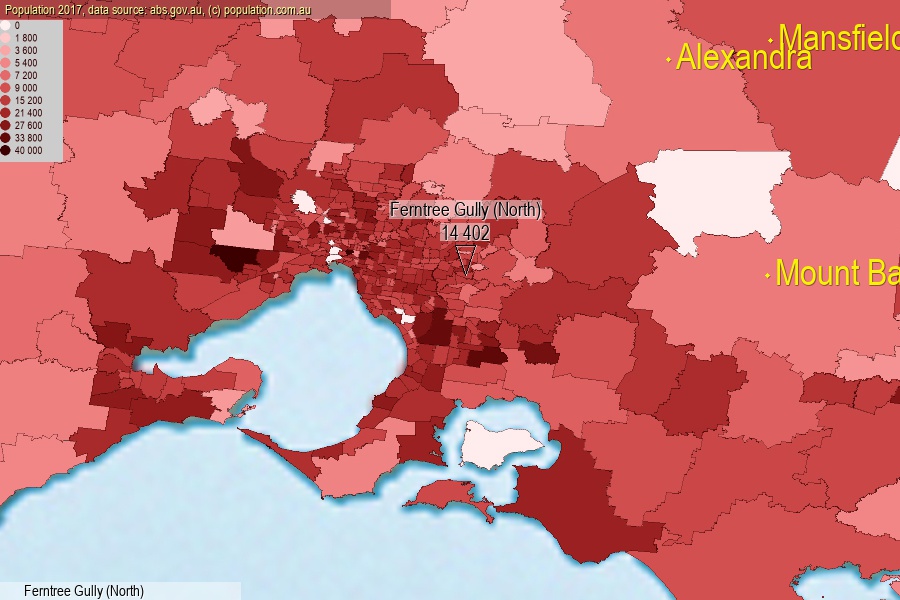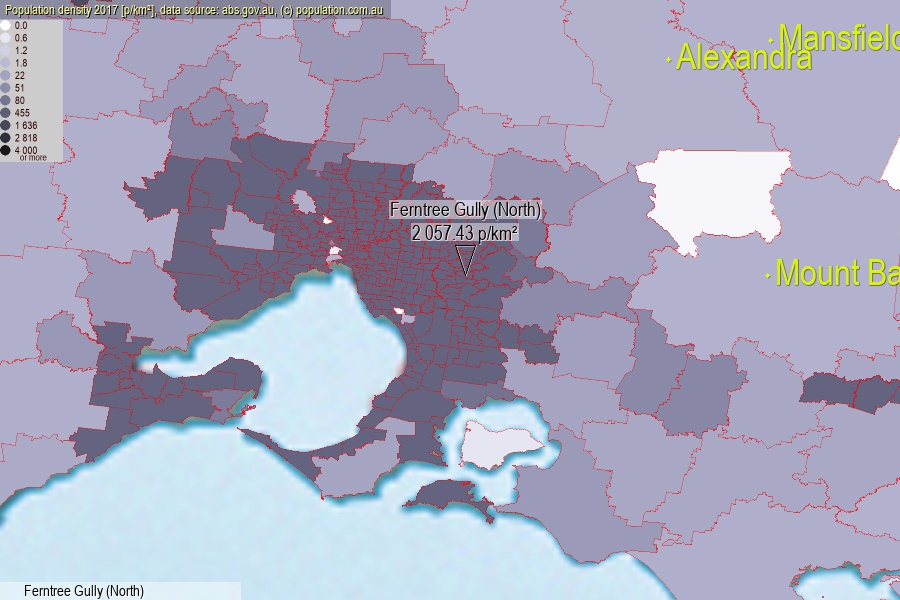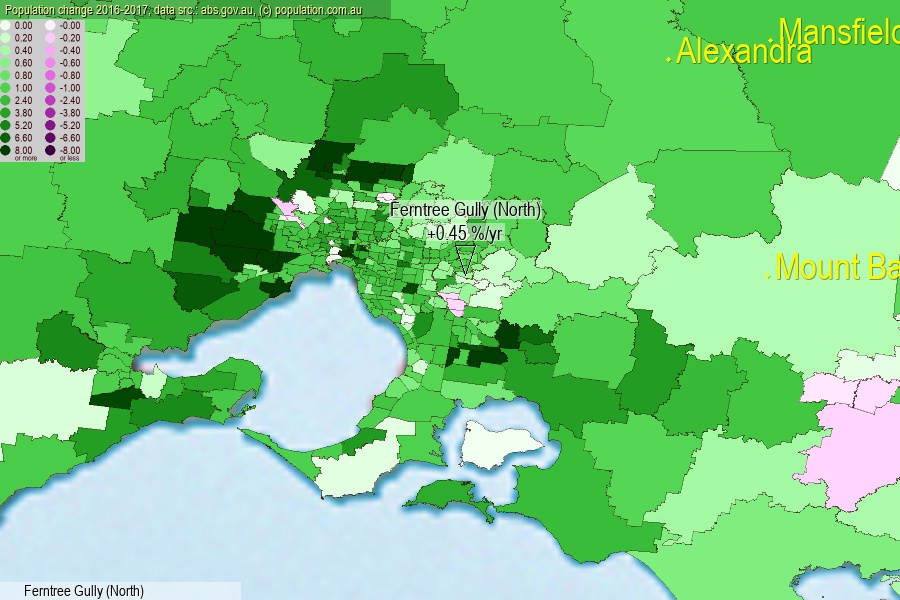 population.com.au
population.com.auLast official estimated population of Ferntree Gully (North) (as Statistical Area Level 2) was 14 402 people (on 2017-06-30)[2]. This was 0.06% of total Australian population and 0.224% of VIC population. Area of Ferntree Gully (North) is 7.00 km², in this year population density was 2 057.43 p/km² . If population growth rate would be same as in period 2016-2017 (+0.45%/yr), Ferntree Gully (North) population in 2025 would be 14 933. [0]



Click to enlarge. Ferntree Gully (North) is located in the center of the images.
Population [people], population density [p./km²] and population change [%/year] [2]
View borders » (new window) [4]
[2001-2002] -0.81 %/Yr.
[2002-2003] -0.48 %/Yr.
[2003-2004] -0.81 %/Yr.
[2004-2005] -0.45 %/Yr.
[2005-2006] -0.32 %/Yr.
[2006-2007] +0.15 %/Yr.
[2007-2008] +0.72 %/Yr.
[2008-2009] +2.93 %/Yr.
[2009-2010] +1.40 %/Yr.
[2010-2011] +0.33 %/Yr.
[2011-2012] +0.90 %/Yr.
[2012-2013] +0.73 %/Yr.
[2013-2014] +0.56 %/Yr.
[2014-2015] +0.67 %/Yr.
[2015-2016] +0.87 %/Yr.
[2016-2017] +0.45 %/Yr.
[0] Calculated with linear interpolation from officially estimated population
[1] Read more about SA2 and Australian Statistical Geography Standard (ASGS) on abs.gov.au
[2] Population data from Australian Bureau of Statistics (Population and density: 2017; change: 2016-2017)
[3] Digital Boundaries: Australian Statistical Geography Standard (ASGS) 2016.
[4] Border coordinates are simplifyed using Ramer-Douglas-Peucker algorithm.